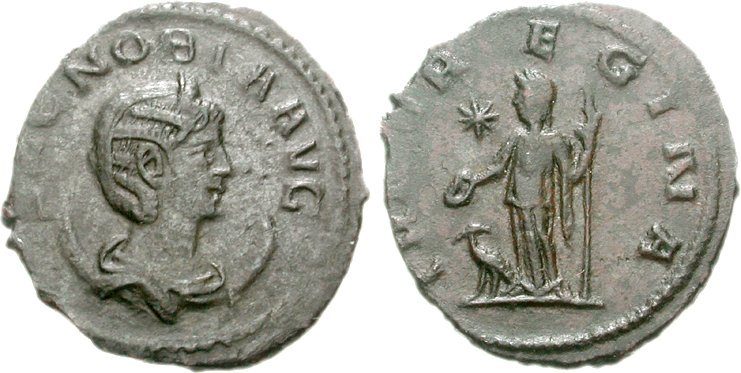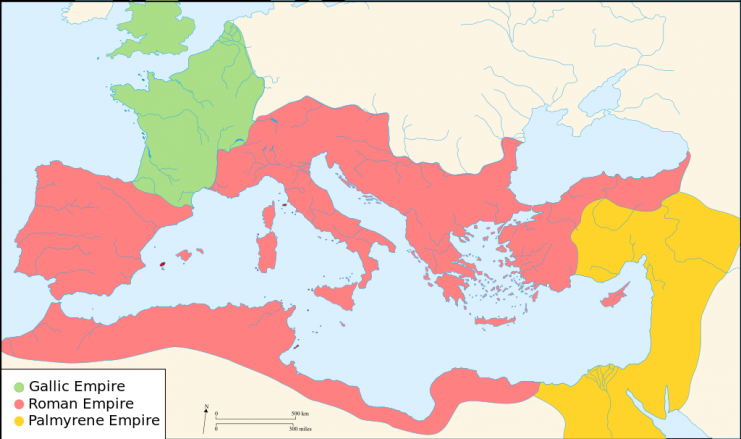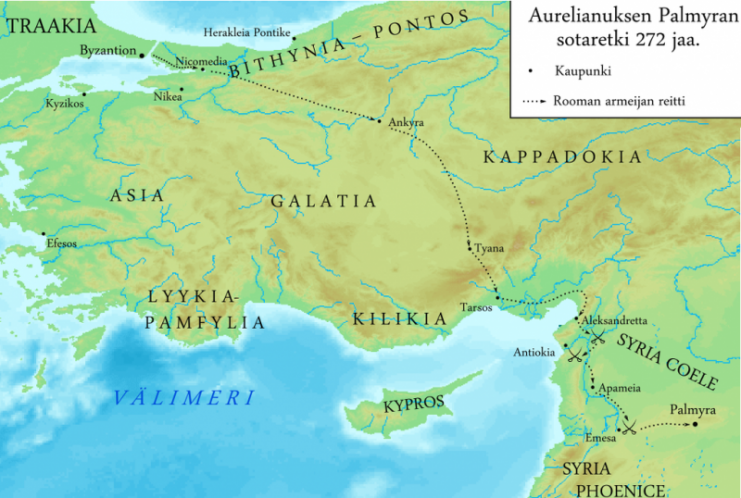In the third century AD, Palmyra was a stopover for traders traveling across the deserts. This made Palmyra wealthy and earned it the nickname “The Pearl of the Desert.” It was famous for its buildings, like the Arch of Triumph and the theater. The main city in the Roman province, also known as Palmyra, it was home to Queen Zenobia who saw the weakening of the Roman empire as a chance to achieve independence from Rome.
Throughout history, historians have disagreed about Zenobia’s history. The “Augustan Histories” written late in the Roman era, state that Zenobia was associated with the Ptolemies of Egypt, which included Cleopatra. In the East, Persian historians believed that Zenobia was of Arab descent. Today, historians agree that Zenobia was not from the Ptolemies but more likely was from an influential Palmyrene family where she received an excellent education.
The exact nature of her upbringing and education, though, is unknown. Edward Gibbon in his classic, The History of the Decline and Fall of the Roman Empire stated that Zenobia was fluent in Greek, Syriac, and Egyptian languages.

Zenobia married Odaenathus who was a Romanized Arab and the ruler of Palmyra. He began his reign in the year 263. He defended Palmyra from the Persians who had just defeated Roman Emperor Valerian. Odaenathus broke through the Persian lines, forcing them to retreat back to their own territory.
Odaenathus pretended to be loyal to Rome and claimed that he was working on behalf of Rome. Soon, it was apparent that he had designs on becoming the “monarch of the East.” Valerian’s son, Gallienus, had succeeded his father as emperor of Rome, but Rome’s weakened state meant Gallienus had no choice but to accept the new power Odaenathus wielded in the East.

While Odaethanus was on his way to creating a Palmyrene empire, he fell victim to an assassination plot by one of his own relatives.
The son of Odaenathus was still too young to take the throne, so Zenobia declared herself regent and seized control of the eastern territories which had recently been stripped from the Persians. She executed those responsible for the death of her husband and took advantage of Rome’s weakness in an attempt to make Palmyra equal to Rome – status accepted by the next Roman emperor, Claudius Gothicus.

Bit by bit, guided by the wisdom of her counselors, Zenobia pushed the separation from Rome further and further. She conquered all of Syria and most of Anatolia (Turkey in modern times). She marched her troops into Egypt and seized Alexandria. By 270, she had full control of Egypt and the wealth that came with it. Her empire seemed to be unstoppable.
https://youtu.be/dIVeiG8QXVo
But the next emperor in Rome was of a different breed. Lucius Domitus Aurelianus was a disciplined military man who was extolled in Rome for his ferocity in battle. During his four-year reign, he won the ongoing war with the Goths, repelled a barbarian invasion in northern Italy and restored Roman rule in Gaul, Britannia, and Hispania.

The open defiance of Roman rule by Zenobia was not unnoticed by Aurelian. It wasn’t enough that Palmyra flaunted their independence in the face of Rome, but the fact that a woman ruler had managed to do so was beyond the pale for the Roman emperor.
So Aurelian struck back at Palmyra. He reclaimed Roman territories that had been taken by Zenobia. Near Antioch, Aurelian’s forces defeated the Palmyrene army so soundly, the survivors retreated all the way to the city of Palmyra. The Roman army arrived there in 272.

While the Romans lay siege to her city, Zenobia sent an openly defiant letter to the Roman emperor. She was content that her archers and cavalry were more than a match for the Romans. If they weren’t, then the unforgiving desert climate would likely repel them. But Aurelian doubled down, and ultimately Palmyra was forced to surrender.

Read another story from us: The Roman Civil War Tore The Empire Apart
Even in death, Zenobia poses mysteries. Some historians believe she killed herself to avoid being captured by the Romans. The Romans stated that Aurelian was not willing to kill a woman and so he brought her to Rome as a captive. Some historians say that she was beheaded in Rome. Others believe that she married a Roman senator.
Whatever the truth is about Zenobia, it cannot be denied that she has managed to capture the imagination of generations of historians and authors.
